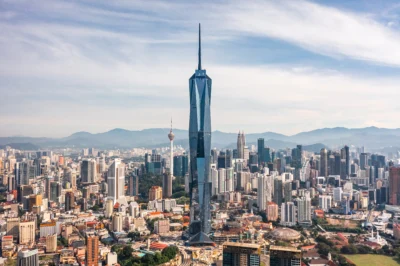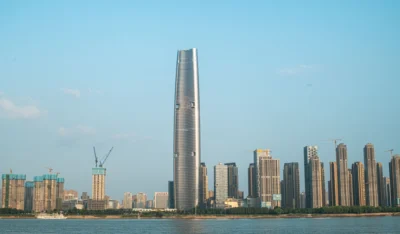Hong Kong’s futuristic underground city

Hong Kong’s urban developers’ ambitious plan to take the city underground
Land scarcity is a perpetual problem for small, global cities like Hong Kong. A land area of only 1,104 sq km, accommodates an estimated 7.15 million usual and mobile residents according to the latest published report of the Census and Statistics Department, and the number of residents and visitors is expected to keep growing.
Similar problems are faced by Hong Kong’ s neighbour Singapore, where high-rise buildings are common and strict home ownership regulations have been implemented. But a proposal by Hong Kong’s government detailing plans to create new land resources for its growing population has generated worldwide attention for taking a different approach—it suggests that the answer could lie in building down, not up.
In 2011, Donald Tsang, then the SAR’s chief executive, commissioned a feasibility study called “Enhanced Use of Underground Space in Hong Kong” to review the possibility of extending the region’s land area vertically— downwards—highlighting the successes and advantages of existing underground facilities around the globe, including the ones in Singapore, Gjøvik in Norway, Itäkeskus in Finland, and Kansas City in the United States.
Hong Kong already boasts existing underground facilities, including its highly efficient subway system, and two saltwater service reservoirs at Hong Kong University, constructed in two, 50-metre long rock caverns. The latter project was able to preserve three historical buildings, minimised tree felling and reduced the amount of construction waste generated, according to the same study.
If Hong Kong’s proposal pushes through, the entire project would be an extremely expensive undertaking and probably take the city’s civil engineers decades.
“China has some underground shopping centres but they were previous bomb shelters, saving development time and costs significantly,” said Thomas Lam, director and head of Research & Consultancy, Greater China at Knight Frank.
Land resources are very limited, but the population keeps growing, including the number of migrant workers and tourists who share the limited housing stock.
Plans to go underground do not necessarily propose that developers build residences in the caverns. The proposal is to relocate most facilities underneath the city, freeing up the surface for housing, hotels and parks, a priority for the current administration and tourism is one of Hong Kong’ s main industries.
According to the Civil Engineering and Development Department, the 2011 study has selected many different government facilities to demonstrate the broad viability of cavern development for a range of facility types and in different geographical areas. Fifteen to 20 zones will have been identified by 2015 for potential development, and after that, it will still be a long time before anything is moved beneath the surface.
“It is also important to develop not only the underground but also the land nearby to provide related auxiliary facilities, especially transportation, to attract pedestrian flow,” Lam said.
Analysts and urban developers agree that the city’s plans for the future will only materialise after extensive studies and preparations are made, and that going underground certainly is not the immediate solution.
“The underground city may not be feasible in Hong Kong in the short term because it takes considerable time, work and costs to plan and construct, deterring private developers,” Lam concluded. Real estate services firm CBRE Hong Kong echoes the same sentiments, saying that further studies are essential for such a heavy proposal, and that “it is not one that we have analysed closely [at present>,” according to Craig Shute, senior managing director.
So, where does a city with a pressing need for land expand for now? Vertically, but upwards, as it has always done in the past.
Chief executive Leung Chun-ying plans to continue building taller apartment buildings to accommodate the growing population, which is expected to breach the eight million mark in the next decade, according to the Information Services Department projections.
“I often think, if a kindergartner asks me, ‘Where will I live when I grow up?’ What answer should I give?” Leung told the media early this year. “‘Nowhere’ is definitely not an acceptable answer.”
Recommended
6 developments driving Asia’s green real estate shift
Developers are being incentivised to push a green agenda into daring new realms
The Philippines’ LIMA Estate drives sustainable industrial growth
LIMA Estate models a citywide vision that uplifts workers while appealing to climate-conscious employers
Malaysia property market rebounds with foreign interest and growth
The nation’s property market is stirring to life, fuelled by foreign buyers and major infrastructure drives
China’s renewable energy surge redefines housing norms and development
From exporting solar panels to building entire green-powered neighbourhoods, China’s renewable surge is redefining housing norms







